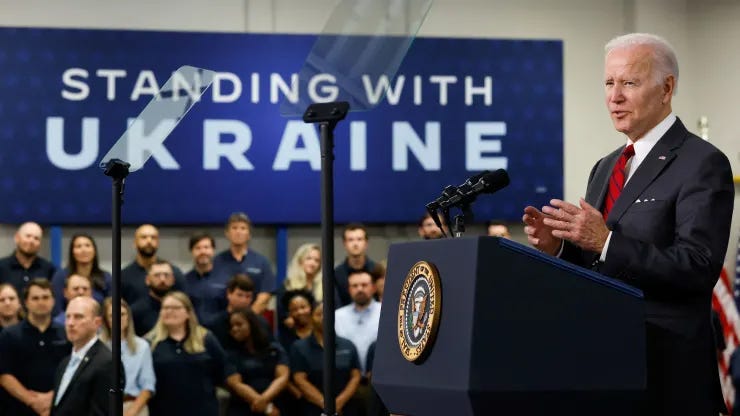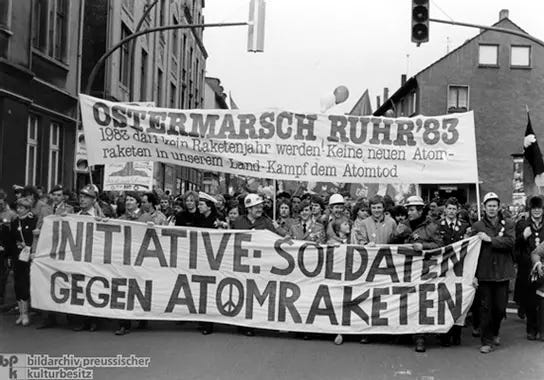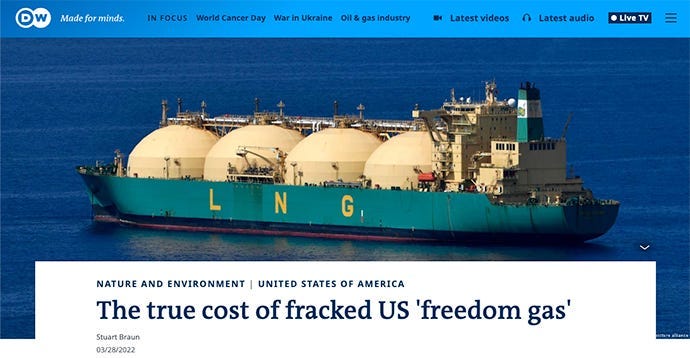How America is WINNING in Ukraine
The war may be bad for others, but it is GREAT for the United States.
Note: this article originally appeared in Medium on February 5, 2023.
The war in Ukraine is a tragedy. But for the USA, it is a dark cloud with a silver lining — or perhaps better said, a gold one.
The conflict in Ukraine, for the United States, fulfils two strategic objectives. First, it provides a much needed boost to the U.S. economy, and second, it eliminates the European Union as a strategic and economic competitor.

It’s Lonely at the Top
After the fall of the Soviet Union, the U.S. became the world’s “lone superpower”. I was in my 30’s at the time, and I remember the chants of USA! USA! became very popular, and it seems now like they have never really died down. In fact, while Americans may not be the most knowledgable people in the world, they are sure of one thing: The USA is Number One.
On a geo-strategic level, this meant that the U.S. had to defend its hegemony; it had to be ever-vigilant, to guard against the potential rise of an opponent who could challenge its position at the top.
Now, most people would think that the only challengers to American hegemony are China and Russia, and they could be forgiven for thinking so. After all, this is exactly what the U.S. elites want you to think.
But that is not exactly true. For there is another challenger to the economic and financial hegemony of the American Empire: Europe.
Sanctions are the perfect weapon — against the EU
As I describe in my article, Can we please stop saying the Ukraine war was “unprovoked”?, the United States has planned and provoked the Russo-Ukrainian conflict for years.
Why would the U.S. want to do that?
The answer is simple: to American strategists, it was a way to “kill two birds with one stone”. By goading Putin into attacking Ukraine, the U.S. was able to pursue two strategic goals: (1) weaken or “bleed” Russia economically and (2) help the U.S. to regain economic superiority over the EU.
One might still wonder: WHY? The answer lies in the overall strategic positioning of the U.S. going back to the end of the Second World War, when the U.S. became the security guarantor of the Western world.
Allies? Or vassals?
As Gonzalo Lira* [R,I,P.] has pointed out so well, the post war NATO-based alliance was a way for the United States to create a “vassalage” in Europe. In other words, the U.S. “allies” in Europe became vassals of the United States. Like a feudal lord, the United States provided protection to its European “subjects” in return for their fealty, which took the form of political allegiance, access to markets, and an unquestioning willingness to follow the U.S. in all things.
As Lira explains, this arrangement allowed Western Europeans to direct large parts of their own GDP towards social welfare programs instead of defense. The great hegemonic USA extended an umbrella of security over the continent, so that Europeans could sleep soundly at night, knowing that the evil Russian bear would not attack them in their sleep.
Of course, there were downsides. I was living in “West” Germany when the Pershing II nuclear missiles were stationed there. The Americans already had 300,000 troops stationed in the Federal Republic at that time, but these missiles were just one step too far. They were intermediate range nuclear missiles, designed to hit East Germany and other targets in that range. The Russians of course had their own intermediate range missiles, the SS-20s, in East Germany. The Germans, under a cry of “Deutsche, wehrt Euch!! (Germans, fight back!), protested vigorously, because they knew that if it came to war between the U.S. and the USSR, all Germany would be turned into a “sea of glass”.

Eventually, Reagan signed the INF Treaty with Gorbachev, and the missiles were removed in 1988. But it marked a turning point: Germany was asserting itself. When the country reunified in 1990, the German people became even more assertive. I remember that, when I had been working in West Germany, almost every German spoke English, and correspondence — even business correspondence — could be done in English with no problem.
After the Wiedervereinigung, that all changed. Suddenly German was the only language acceptable. “We must have it in German”, the argument went, “because our brothers in East Germany speak Russian and not English”.
Yes, the accession of the Neue Bundesländer in the East changed a lot of things for Germany. Suddenly Russia no longer posed the visceral threat that it had earlier. Business and cultural contacts flourished now that Germany had gained 16 million Russian speakers, the most famous of which was former Chancellor Angela Merkel.
Fast forward to 2011, when the first Nord Stream pipeline opened, bringing cheap, clean Russian gas directly from Russia to Germany. Of course, Europe had been getting 40%+ of its energy from Russia all along, but now Russia stood to increase its market share significantly, and prices were forecast to go even lower.
“Mr. President, we cannot allow a GDP gap”
The United States became concerned. The combined GDP of the EU had surpassed that of the U.S. and it seemed that, thanks to the USA providing for defense, and Russia providing the cheap energy, the EU was only going to get stronger.

When Nord Stream 2 opened, the Americans knew they had to do something. Under Obama, the fracking industry in the U.S. had exploded (sometimes literally), and there were now copious amounts of liquified natural gas ready to get shipped to markets all over the world. Why not ship it America’s vassals in the EU?
The problem: U.S. LNG costs up to 500% MORE than Russian gas, according to oilprice.com. The Europeans simply could not afford to run their economies on American gas. And so Germany continued to grow, driving the EU economy forward, fuelled — literally — by cheap Russian energy.
The Americans had to do something, but what?
RAND to the rescue
In 2019, the RAND Corporation, Washington’s favourite think tank, published a study entitled, “Overextending and Unbalancing Russia”. In this paper, RAND suggested two courses of action:
Increasing sharply the supply of “lethal aid” to Ukraine in terms of “both quantity and quality”;
Simply ”stopping Nord Stream 2” and convincing Europe to buy American LNG instead of Russian gas.
The challenge: how to implement these strategies in a complementary way.
The solution: get Russia to take some sort of precipitous action in Ukraine in a way that would justify imposing sanctions on Russian energy and at the same time justify all the NATO military support to Ukraine that we can muster. Genius!
“Keeping the Germans down”
When NATO was formed in 1949, its very first Secretary General, Lord Imsay, pithily said the group’s mission was to “keep the Russians out, the Americans in, and the Germans down”.
In October 2021, George Friedman, CEO of Stratfor, gave a speech at the Chicago Council on Foreign Affairs, in which he said:
“The primordial interest of the United States, over which for centuries we have fought wars– the First, the Second and Cold Wars– has been the relationship between Germany and Russia, because united there, they’re the only force that could threaten us. And to make sure that that doesn’t happen.” [VIDEO]
Friedman basically confirmed Lord Imsay’s definition of NATO’s raison d’être. As I have described above, over the years that mission has failed. Yes, the Americans are “in”, but not all the way “in” — they still had all that high-priced LNG to sell. And the Russians being “in” with all their gas and oil has allowed the Germans to “rise”.
In fact, Russia was supplying 30% to 40% of the EU’s gas — and the Americans wanted that market share for themselves.

How then, to once more kick the Russians “out” and put the Germans “down”?
The answer: SANCTIONS.
The genius of American sanctions
Now we can see the true genius behind the American sanctions regime. By imposing sanctions on Russia and forcing their vassals in the collective West to do the same, the U.S. was able to strip Europe of their access to cheap Russian energy.
Better yet, the U.S. was able to convince its subjects in the EU to switch to the much more expensive, much “dirtier” American LNG.

As Deutsche Welle announced in March 2022:
An extra 15 billion cubic meters of liquefied natural gas (LNG) — sourced largely from hydraulic fracking wells that have mushroomed across the United States — will now land on Europe’s shores from across the Atlantic this year.
This is having a tremendous negative effect on the EU’s GDP, and Germany especially.
In fact, Germany is now on a path of de-industrialisation, according to an article in Bloomberg:
“Energy inflation is far more dramatic here than elsewhere ,” said Ralf Stoffels, chief executive of BIW Isolierstoffe, a supplier of silicon parts to a number of industries. “I fear a gradual de-industrialization of the German economy “.
Reports are flowing in that EU companies are closing their EU operations and moving to the U.S.

As an example of this trend, Ford Motors announced in January that it is moving its operations in Cologne, Germany, back to the United States — along with 15,000 jobs.
Meanwhile, on the other side of the pond
The sanctions are hurting Europe, and especially Germany, but they are proving to be an absolute boon to the American economy, and to the U.S. energy sector in particular.
In fact, the US is now sending 60% of its liquefied natural gas exports to Europe, up from less than 20% this time a year ago, according to Business Insider.

It should also be noted that U.S. LNG prices are seven times higher in Europe than they are in the United States. The EU market, once thought to be beyond reach, is now proving to be a gold mine for American energy companies.
Making a killing in the arms trade
Energy companies aren’t the only Americans to profit handsomely due to the war in Ukraine. The U.S. military-industrial complex is also making a killing (pun intended).

Al Mayadeen English reports that:
As a result of the war in Ukraine…arms sales skyrocketed from $35.8 billion in 2021 to $51.9 billion in 2022, and an even larger profit was seen due to direct weapon sales from US manufacturers, going from $103.4 billion in 2021 to $153.7 billion that same year.
Bill Hartung, a defence analyst at the US Quincy Institute for Responsible Statecraft, told the ABC:
“The United States is kind of seizing this moment to try to get out a bunch of things that have been on their wish list for years, like committing to multi-year procurement of weapons”.

All is going according to plan
Perhaps it is too much to assume that the U.S. plan to goad Russia into attacking Ukraine was designed to ultimately de-industrialise the EU while boosting American GDP through increased sales of energy and weapons.
Perhaps.
Still, it is undeniable that Russia’s invasion of Ukraine has, as the defence analyst above mentioned, allowed the USA to get “a bunch of things that have been on their wish list for years” — a reinvigoration and strengthening of its domestic arms industry, a massive boom in energy sales and profits, and the economic “tamping down” of its emerging economic rival, the European Union.
You may not agree that the U.S. worked for years to provoke Russia to attack Ukraine. You may not agree that the U.S. worked for years to train and prepare Ukraine for a planned and expected war with Russia. You may not agree that the U.S. sanctions regime was designed to immiserate Europe while at the same time enriching America.
But you must agree that the war in Ukraine and the ensuing sanctions regime have worked to accomplish that very thing.
And that is why America is WINNING in Ukraine!
*Gonzalo Lira was arrested by the fascist Ukrainian security services in July 2023 and died on 11 January 2024 while in Ukrainian custody.
#End.
If you liked this post, please consider leaving me a tip! Donations support my independent, ad-free writing.
============================================================================





America may be "winning" but in the end all of us are "losing" when this Ukraine nightmare is all said and done. Great article and thanks for your excellent research. (RIP Gonzalo.)
And on this point
On this point:
"..The Germans, under a cry of “Deutsche, wehrt Euch!! (Germans, fight back!), protested vigorously, because they knew that if it came to war between the U.S. and the USSR, all Germany would be turned into a “sea of glass”.."
Here it is shocking to see the contrast today, where both the Scandinavia mis-leaders and their masses, are all whipped up into a jingoistic NATO-fest. And we have seen two Scandinavian ex-prime ministers from Denmark and now Norway, leading the militarisation of their own countries, which were previously peacemakers and not war mongers, in NATo wars of aggression in Libya and Afghanistan and Syria. Sy Hersh recently even revealed that the NATO Secretary General Jens Stoltenberg, had been a long term asset of the US spooks for decades spying on his own colleagues in the Norwegian Labour Party and ensuring that the government policy was that of the foreign masters in DC and Langley.
But the fact is that NATO sees Scandinavia was an expendable zone, a forward staging battle ground, and NO ONE in these countries seems to grasp that they have been set up as staging points for a US invasion of Russia, and that the Russian military strategy would have to be to nuke them, in order to hold off a NATO invasion.
The lack of understanding of self-interest within Scandinavia, is at shocking levels in current times, its like they all lost their minds due to the barrage of propaganda.
Already these countries are being destabilised, as the far right wing makes gains in these societies that are now split by cutting social welfare and spending money on weapons and spending money on marketing macho warfare. Now they have a fast growing Neo-nazi movement, and the US just this week banned a Scandinavian neonzai group, the "Nordic Resistance Movement":
https://www.state.gov/terrorist-designations-of-nordic-resistance-movement-and-three-leaders/
https://www.svt.se/nyheter/inrikes/usa-terrorklassar-nmr
https://www.di.se/nyheter/usa-terrorklassar-nmr/